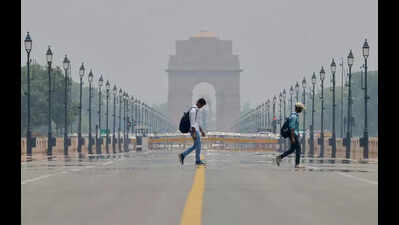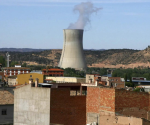Burn Notice: With Heat Not Clocking Out At Sunset, All Of Delhi Is In Danger Zone | Delhi News – Times of India

New Delhi: Delhi ranks high on the heat risk index, with 55% of its districts falling in the very high-risk category and the rest in the high-risk category. A report by the Council on Energy, Environment and Water (CEEW) said that the city had experienced rising night-time temperatures and high humidity in the last decade.The study, titled ‘How Extreme Heat is Impacting India: Assessing District-level Heat Risk’, highlighted three key trends: an alarming rise in very warm nights; increasing relative humidity across north India, particularly in the Indo-Gangetic Plain; and heightened heat exposure in dense, urban, and economically critical cities such as Delhi, Mumbai, Ahmedabad, Hyderabad, Bhopal and Bhubaneswar.For the study, a heat risk index (HRI) was developed and used to assess threats in regard to 734 districts of India. The index is based on the Intergovernmental Panel on Climate Change (IPCC) framework, which defines “risk as a combination of hazard, exposure, and vulnerability”. The report classifies districts into very low, low, moderate, high and very high-risk categories on a score ranging from 1 to 5 based on risk levels.The study highlighted that extreme heat now posed a risk to 57% of Indian districts, home to 76% of the country’s population. In Delhi, the districts of South-West, North-West, North, West, North-East and Shahdara fell in the very high risk category, while the remaining five districts were placed in the high risk range.The city is experiencing a worrying rise in night-time temperatures, recording six additional very warm nights per summer in the 2011-22 decade than in the 1982–2011 baseline, despite not seeing a major increase in very hot days, the report says. Relative humidity during peak summer months also increased nearly 9% over the last decade, significantly worsening heat stress.“This is compounded by a declining diurnal temperature range, indicating that nights are not cooling down enough after hot days,” the study says. “Delhi’s extreme risk is driven by its very high population and building density, which exacerbate the urban heat island effect, as well as high economic activity that increases the potential for productivity and infrastructure losses during heat events.”Marginalised communities living in informal settlements face additional heat risk due to limited access to cooling and healthcare. “Despite having relatively good adaptive capacity — such as access to electricity and healthcare — the scale of hazard and exposure outweighs these buffers. Delhi’s warming is further amplified by rapid urbanisation, which contributes to a faster rise in warm nights, similar to cities like Mumbai, Bengaluru and Chennai,” says the report.Vishwas Chitale, senior programme lead, CEEW, said, “Delhi ranks among the top 10 states and Union territories in India, with 55% of its districts falling in the very high-risk category. High population and building density, urban heat island effect and presence of vulnerable groups such as the elderly, children and residents of informal settlements elevate the city’s risks.” He added that Delhi govt’s newly launched heat action plan was a crucial step towards addressing both immediate threats and long-term resilience.
















